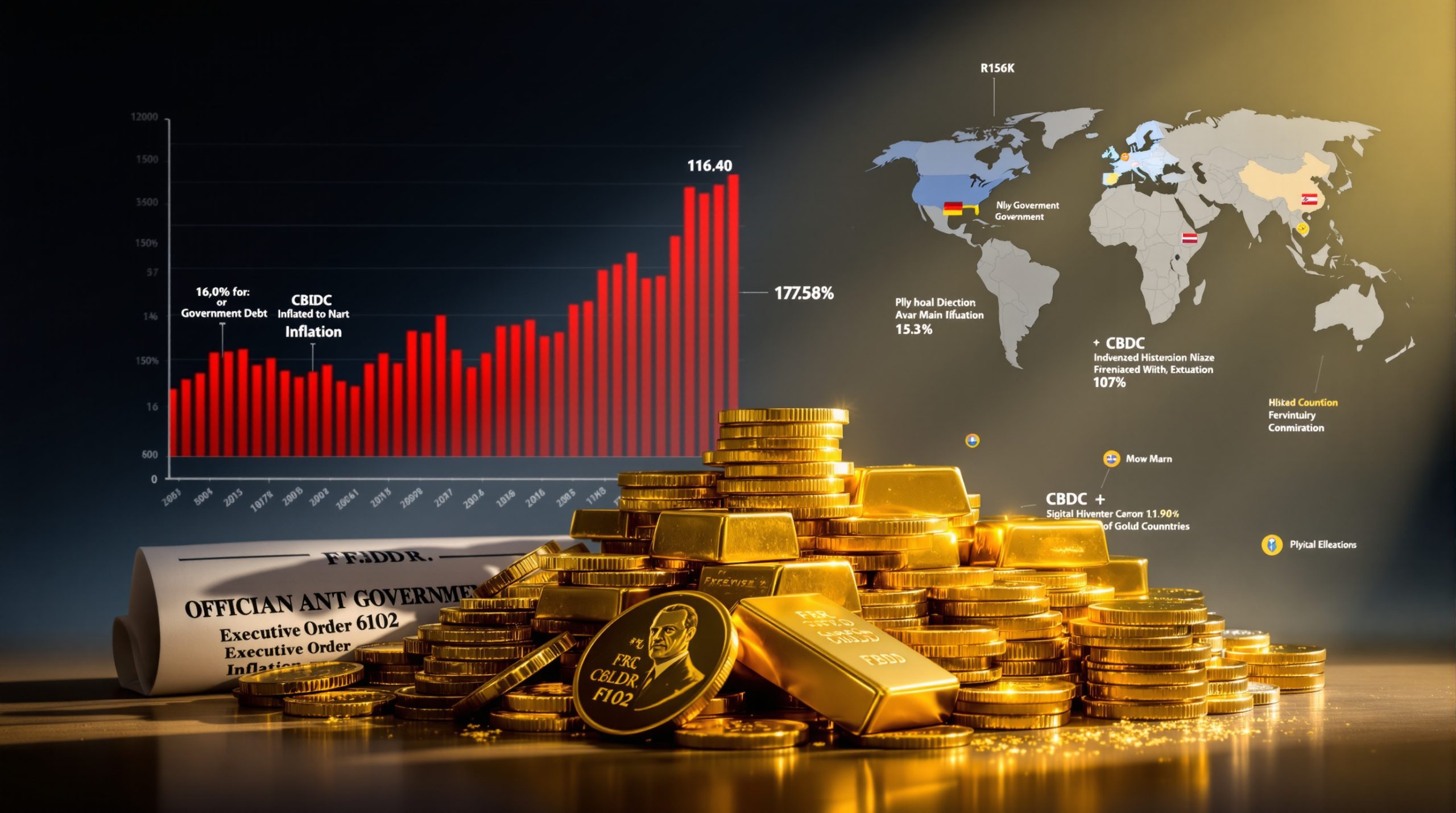What Is the Jackson Hole Economic Symposium?
At the Jackson Hole Economic Symposium 2025, influential figures gather to discuss monetary policy. This prestigious event provides an opportunity for experts to exchange views on shifting economic conditions. The discussions often determine future trends in global markets, while the conference itself has become a benchmark for financial analysis.
The symposium is renowned for its setting in the picturesque Grand Teton National Park. It offers a retreat-like atmosphere where attendees can deliberate away from the bustle of financial capitals. Furthermore, its format encourages candid dialogue between central bankers, finance ministers, and academics.
The Premier Central Banking Conference
Often dubbed the "davos for central bankers," the event has evolved beyond its original remit. It now serves as a vital forum for signalling policy changes to worldwide markets. In addition, participants are privy to discussions that influence asset valuation and risk strategies.
Moreover, policy signals from previous sessions have triggered movements in diverse asset classes. For instance, analysts often review the gold prices analysis report to gauge market sentiment.
Additionally, insights on US inflation and tariffs further demonstrate the symposium’s global influence.
Historical Significance and Market Impact
Established in 1978, the symposium has grown in importance over its four-decade history. Its early days were modest, yet it gained prominence during Alan Greenspan’s tenure. Consequently, market watchers now regard it as a key indicator for long-term economic trends.
Historical keynote addresses have often prompted significant market moves. Analysts have noted that even subtle shifts in tone can trigger immediate reactions across equities, bonds, and currencies. This environment fosters a dynamic response amongst global investors.
Notably, discussions have included topics such as global recession outlook. In addition, debates on gold bond dynamics have captured the market’s attention.
How Did Federal Reserve Chair Jerome Powell's Speech Impact Markets?
Key Policy Signals Delivered
In his highly anticipated address, Jerome Powell outlined a significantly dovish stance. He confirmed that an interest rate cut was "firmly on the table" for the upcoming FOMC meeting. This message was unexpected by many market participants.
Powell also noted that employment concerns had increased, prompting a rebalancing of the Fed’s priorities. Consequently, the speech represented an important pivot away from a longstanding focus on inflation control.
Market experts immediately appreciated the subtle signals in Powell’s language. They noted that the approach allows for flexibility in policy while still indicating future easing.
Immediate Market Reactions
Following Powell’s remarks, financial markets reacted decisively. Trading volumes increased markedly across various asset classes. In addition, the dollar index weakened significantly, offering support to dollar-denominated commodities.
Bond markets experienced a steepening yield curve as short-term rates fell more rapidly than long-term ones. Moreover, equity sectors such as materials and mining saw notable rotation.
Many participants now refer to the gold price forecast report to understand emerging trends. Furthermore, external analysis on jackson hole details provides additional context on these movements.
What Economic Factors Influenced the Fed's Dovish Shift?
Labor Market Concerns
Employment data has recently shown a slowdown in job creation. Although headline unemployment remains low, more detailed indicators suggest moderation. In addition, an upward trend in continuing unemployment claims has added caution to the Fed’s outlook.
Wage growth has started to moderate as well, reducing inflationary pressure from labour costs. These factors give policymakers room to consider a more accommodative stance while maintaining economic stability.
Inflation Trajectory Analysis
Core inflation has continued to decelerate over consecutive readings. This deceleration gives the Fed increased confidence that inflation is being contained. For instance, the core Personal Consumption Expenditures measure is gradually closing in on its target range.
Furthermore, consumer price expectations have become well-anchored near the 2% target. In addition, improvements in supply chain logistics have contributed to overall price stabilisation. Analysts also consider developments like US inflation and tariffs when assessing risks.
Geopolitical Considerations
Trade policy developments now play an increasingly significant role. Potential tariff implementations could introduce new inflationary pressures, thereby complicating the outlook. In addition, global growth concerns have prompted coordinated policy responses amongst various central banks.
Moreover, shifts in international monetary policies have reduced risks of capital flow disruptions. These trends contribute to a complex backdrop for monetary decision-making. For further insights, recent reports on global recession outlook are often referenced.
What Are Market Projections Following the Signals?
Interest Rate Cut Forecasts
Financial markets have quickly adjusted to the prospect of a rate cut at the next FOMC meeting. Interest rate futures now indicate multiple cuts before year-end. Major financial institutions have revised their projections accordingly.
Analysts even anticipate multiple quarter-point rate reductions. The new cycle could well represent the most significant pivot since the global financial crisis. Therefore, investors are reconfiguring portfolios to take advantage of the forthcoming easing.
Precious Metals Outlook
Recent technical analysis suggests that precious metals will benefit from lower rates. Gold, in particular, has maintained strong support above previous resistance levels. In addition, increased investment demand has helped bolster the market.
Official sector purchases continue to add support to the market. For instance, central bank gold buying trends are evident. Furthermore, investors often monitor reports such as the gold prices analysis to inform their decisions.
Broader Commodity Market Implications
Energy markets have also responded to expectations of monetary easing. Crude oil prices have recovered from earlier declines. Additionally, industrial metals like copper have shown renewed strength as markets anticipate improved economic conditions.
Agricultural commodities have experienced increased allocation shifts. As a result, investors are simultaneously chasing both safe-haven assets and growth opportunities. This evolving environment is characterised by heightened volatility.
How Are Professional Traders Positioning for the Post-Environment?
Institutional Strategy Shifts
Major financial institutions are now adjusting their portfolio strategies. They are shifting allocations towards sectors that benefit from falling interest rates. Additionally, commodity exposure is increasing among trading desks at investment banks.
Many proprietary traders are now taking positions in precious metals, further supported by reports on gold bond dynamics. In addition, fund managers are reassessing fixed income allocations to better handle lower rates.
Strategies now include a greater focus on Treasury Inflation-Protected Securities and shorter-duration instruments. This is a direct response to evolving economic conditions.
Technical Analysis Perspectives
Chart patterns show clear breakouts across several commodities. Volume trends during these price advances have bolstered analysts’ confidence. In addition, relative strength indicators suggest a favourable environment for commodities.
Momentum indicators across different time frames have aligned in a bullish pattern. Such technical signs often serve as early signals for extended price advances. Consequently, traders are increasingly adopting technical strategies.
Moreover, external reports like fed chair insights provide additional context for these trends.
Risk Management Approaches
Professional traders are adapting their risk strategies accordingly. Position sizes are being reduced during periods of heightened volatility while exposure is maintained strategically. Options strategies, such as risk reversals, have gained popularity as well.
Traders also rely on correlation analysis to manage exposure across related markets. This approach helps in balancing portfolios while capturing thematic opportunities. Finally, scenario planning now forms an essential part of risk management.
What Key Economic Events Will Drive Markets Through Year-End?
Critical Data Releases
Upcoming employment reports will be closely scrutinised. Key metrics include job creation, labour force participation, and wage growth. In addition, inflation readings will remain critical in validating the current monetary stance.
Forward-looking indicators such as manufacturing and services PMIs are also under the microscope. Furthermore, consumer sentiment and retail sales provide valuable insights into economic momentum. This data is essential for forecasting future monetary policy.
Central Bank Policy Decisions
The Federal Reserve’s meetings are expected to be pivotal. Each decision, along with accompanying guidance, could trigger significant market reactions. In addition, central bank communications remain a critical area of focus for investors.
Similar attention is given to global central banks, which may mirror the Fed’s easing cycle patterns. As a result, policy divergence or convergence could have far-reaching implications.
Geopolitical Developments
Trade policy details will play a major role in shaping market expectations. Tariff levels and potential retaliatory measures are closely monitored. Furthermore, decisions on energy production by groups like OPEC+ will influence global energy prices.
Political transitions and regulatory shifts also pose potential risks. These developments may either reinforce or counteract the anticipated rate cut cycle.
How Does the Fed's Pivot Impact Different Asset Classes?
Currency Market Dynamics
During easing cycles, the US dollar often weakens markedly. This weakness typically boosts dollar-denominated commodity prices. In addition, increased currency volatility creates both risks and opportunities for international investors.
Hedging strategies become essential as traders recalibrate foreign exchange exposures. Moreover, emerging market currencies may experience differentiated performance as investors react to the changing rate environment.
Fixed Income Implications
Yield curves typically steepen during easing cycles. Short-term rates respond faster than long-term ones, helping to create opportunities in curve positioning strategies. In addition, credit spreads often tighten as economic prospects improve.
Duration management is critical during these transitions, with investors monitoring real yield factors closely. The overall shift in sentiment encourages moves towards inflation-protected securities and related assets.
Equity Market Considerations
Sector rotation patterns often emerge during policy transitions. Interest-rate sensitive sectors and smaller-cap stocks typically perform well initially. In addition, lower discount rates can support higher equity valuations, though this varies by sector.
Investors are increasingly turning to dividend strategies as yields in fixed income markets fall. Moreover, valuation metrics adjust in response to the evolving monetary landscape, prompting shifts in market leadership.
What Are the Historical Precedents for Post-Symposium Market Movements?
Previous Fed Pivot Cycles
Historical easing cycles provide useful context. For instance, the 2019 cycle saw significant rallies across risk assets before unexpected market disruptions occurred. Additionally, the 2007–2008 shift during the global financial crisis reflected a more reactive policy stance.
Earlier easing episodes, such as the 2001–2003 period, spurred multi-year commodity bull markets. Moreover, the 1995 "soft landing" stands as an instructive example of timely monetary adjustment.
Market Performance Patterns
Commodities typically undergo distinct phases during easing cycles. Initially, precious metals react strongly, followed by energy and industrial commodities. In addition, currency relationships adjust as interest rate differentials narrow.
Sector leadership in equities often shifts during these periods. Furthermore, volatility regimes tend to evolve, creating distinct phases that influence risk management strategies.
Comparative Analysis of Current Conditions
Contemporary economic indicators differ from previous cycles. While the labour market remains robust, inflation is moderating but still elevated relative to earlier easing episodes. Moreover, financial stability indicators, such as bank capital levels, are generally healthier today.
Global economic synchronisation appears more pronounced, amplifying policy impacts. These differences underscore the unique challenges and opportunities presented by the current transition. One notable case is the guidance provided by the Jackson Hole Economic Symposium 2025, which offers strategic insights into future policy moves.
FAQs About the Economic Symposium
What was the main focus of the economic symposium?
The event centred on balancing inflation concerns with emerging labour market weaknesses. Discussions highlighted a shift in risk assessment that now includes potential economic slowdowns.
How does the Fed's policy shift affect investment strategies?
Investors typically respond by favouring real assets and inflation hedges. Adjustments include increased allocations to commodities, particularly in precious metals and emerging market assets, while rebalancing fixed income portfolios.
What indicators will the Fed watch before confirming rate cuts?
Key indicators include employment figures, wage growth, and core inflation readings. Additionally, forward-looking measures like PMIs help inform the Fed’s decisions.
How might global central banks respond to the Fed's easing signals?
Many may adopt similar easing cycles, creating a coordinated global stimulus. This response can ease pressure on emerging market currencies and alter relative asset valuations.
What risks could derail the anticipated rate cut cycle?
Persistent inflation or unexpected supply shocks may constrain policy easing. Furthermore, geopolitical tensions and robust domestic growth could alter forecasts.
Navigating the New Monetary Landscape
The current monetary transition offers both opportunities and challenges. Market participants are embracing tactical repositioning as conditions evolve. In doing so, they benefit from a more flexible approach to risk management.
Historical data and technical analyses support strategic shifts during easing cycles. Consequently, timely adjustments can yield significant benefits. Notably, insights from the Jackson Hole Economic Symposium 2025 guide investors in charting a prudent course toward a more resilient portfolio.
Ultimately, recognising these policy pivots early is crucial for capitalising on emerging trends and minimising risk.
Looking for Early Insights into Major Mineral Discoveries?
Gain a market-leading edge with Discovery Alert's proprietary Discovery IQ model, which provides instant notifications on significant ASX mineral discoveries, empowering you to make informed investment decisions before the wider market. Visit the Discovery Alert discoveries page to understand how historic discoveries have generated substantial returns for early investors.




